Iwakuni City-- A Day Trip from Hiroshima and More than Worth the Effort
An hour from Hiroshima, Iwakuni claims one of the most beautiful bridges in the world--the five-arch brocade Kintaikyo. You also might like the harmless white snakes with red eyes, the mountaintop castle, the cormorant fishing and the famous food.
by Nancy Kerstetter
Iwakuni—a small city on the Seto Inland Sea—lies 25 miles southwest of Hiroshima. One of the main tourist attractions in Iwakuni is Kintaikyo, a picturesque five-arch bridge spanning the Nishiki River, an engineering marvel dating from the 17th century. A mountaintop castle overlooks the city and sea. You can sample everyday life in modern Japan at a slower pace in this smaller city. This is a remote tourism destination for westerners, but Americans are visible on weekends as some 15,000 reside nearby at Marine Corps Air Station Iwakuni.
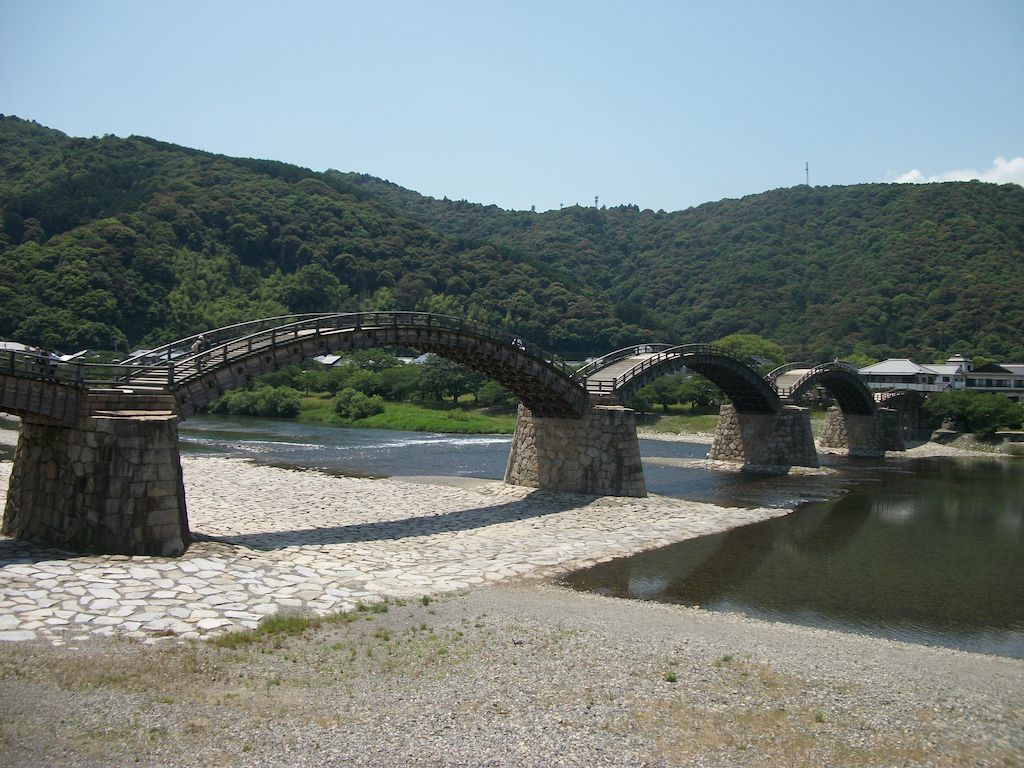
Originally completed in 1673, each section of the current bridge is rebuilt on a rotating schedule every 20 years.
Kintaikyo, often enumerated among the most beautiful bridges of the world, is 211 yards long. It is constructed of wood resting on four stone supports. Enjoy the thrill of summiting each arch in succession as you cross the clear waters of the Nishiki River. Pause to admire the views up and downriver as well as along both banks. Bring a picnic lunch to eat in the shade of the riverside trees.
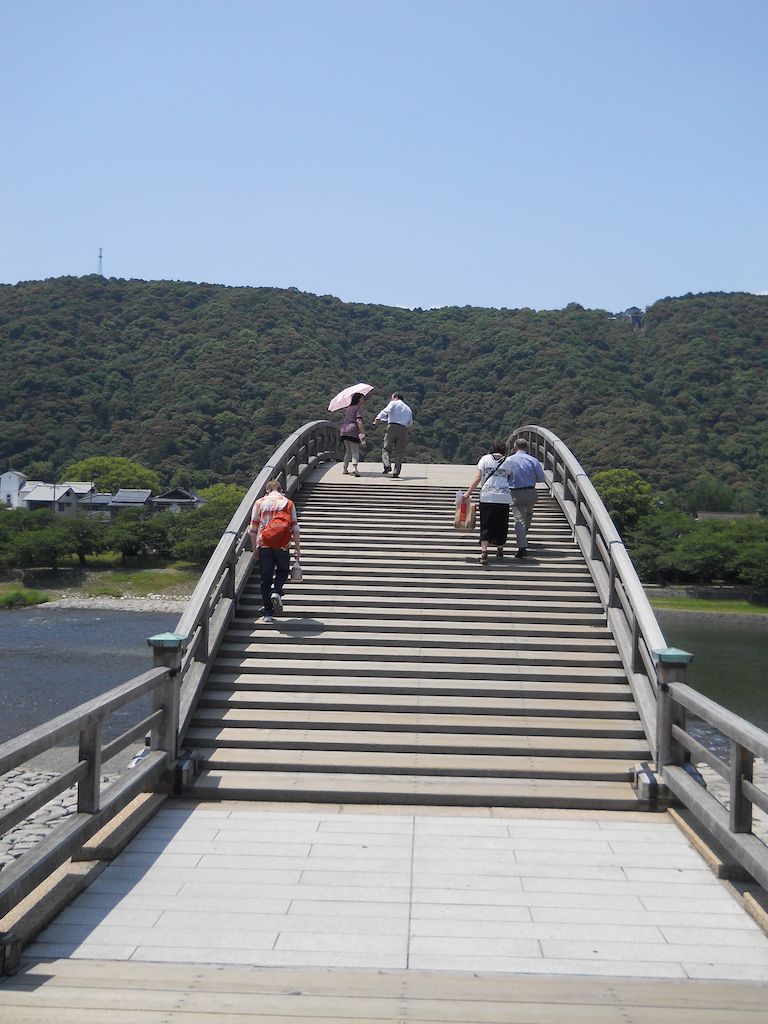
Leisurely stroll the five-arches of Kintai-kyo Bridge to savor the experience.
Stationed near the bridge, free tourist guides volunteer their time daily to explain local bridge and castle history to interested visitors. Some of the volunteer guides speak English. Katsuhiko Fujimoro, an excellent English speaker, squired us around the historic district which features an art museum, peony garden, iris gardens, Kikko Koen park and fountains, history museum and statue of Kojiro Sasaki, a famous sword fighting samurai.
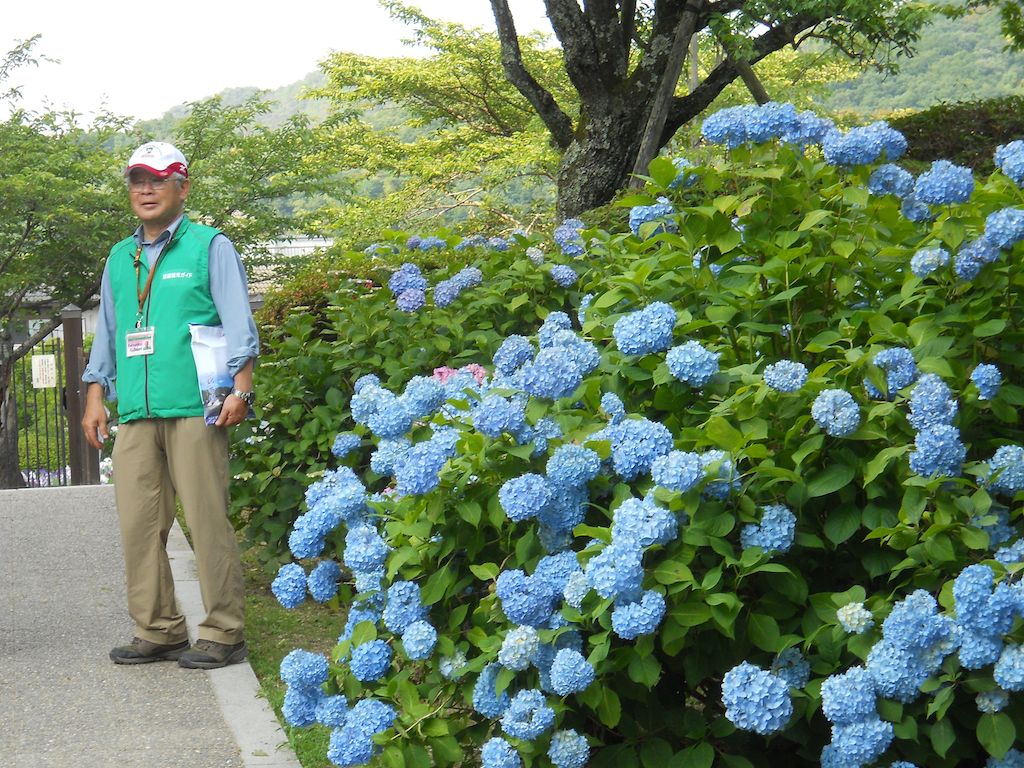
Volunteer guide Katsuhiko Fujimoro spends hours showing visitors around his hometown attractions.
The original appearance of a samurai residence has been maintained and is located in the historic area near other samurai period housing and training grounds. Two spectacular iris gardens were in full bloom when we visited, as were the hydrangeas. One of the iris gardens is in water. Wooden boardwalks traverse the picturesque ponds for visitor access.
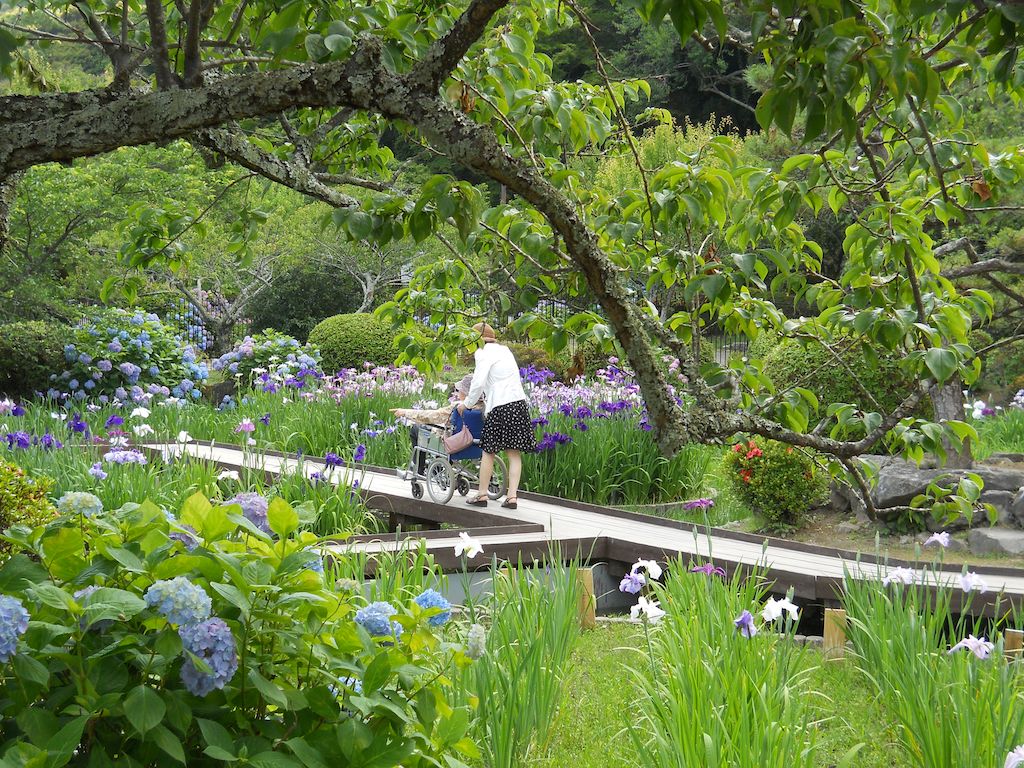
Garden visitors use wooden boardwalks to tour the iris water garden.
Another claim to fame is Iwakuni’s unusual ivory white snakes. The harmless snakes, with red eyes and creamy white scales, grow to six feet long. They are on display in White Snake Park or Imazu Tenjinyama Shrine. Some Japanese believe they bring good luck.
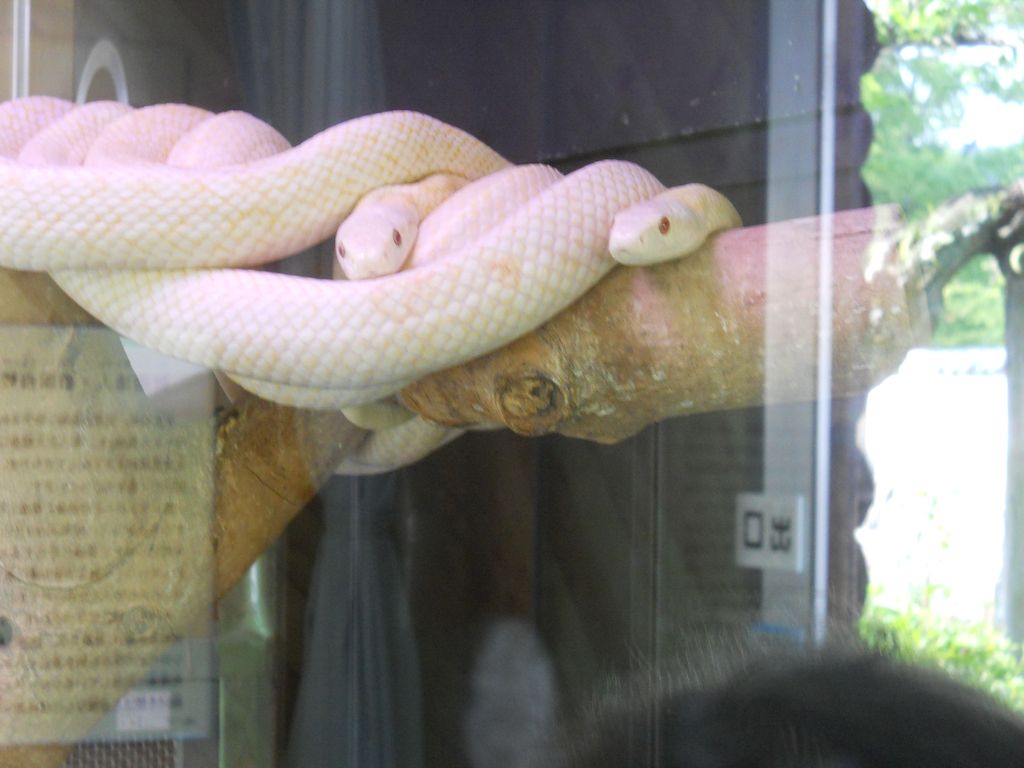
The unique, non-poisonous ivory white snake calls Iwakuni home.
There are three ways to reach the top of Mount Shiro-yama where Iwakuni Castle sits — walk, drive part way and ride the ropeway. The three-minute ropeway saves lots of time and affords a lovely view of the region. Find the coin vending machine at the ropeway station to purchase a collectible gold coin imprinted with the bridge and ukai fisherman on one side and the castle on the reverse. Many castles issue similar coins for souvenirs. From the ropeway station, there is still a vigorous uphill walk to the mountaintop castle.
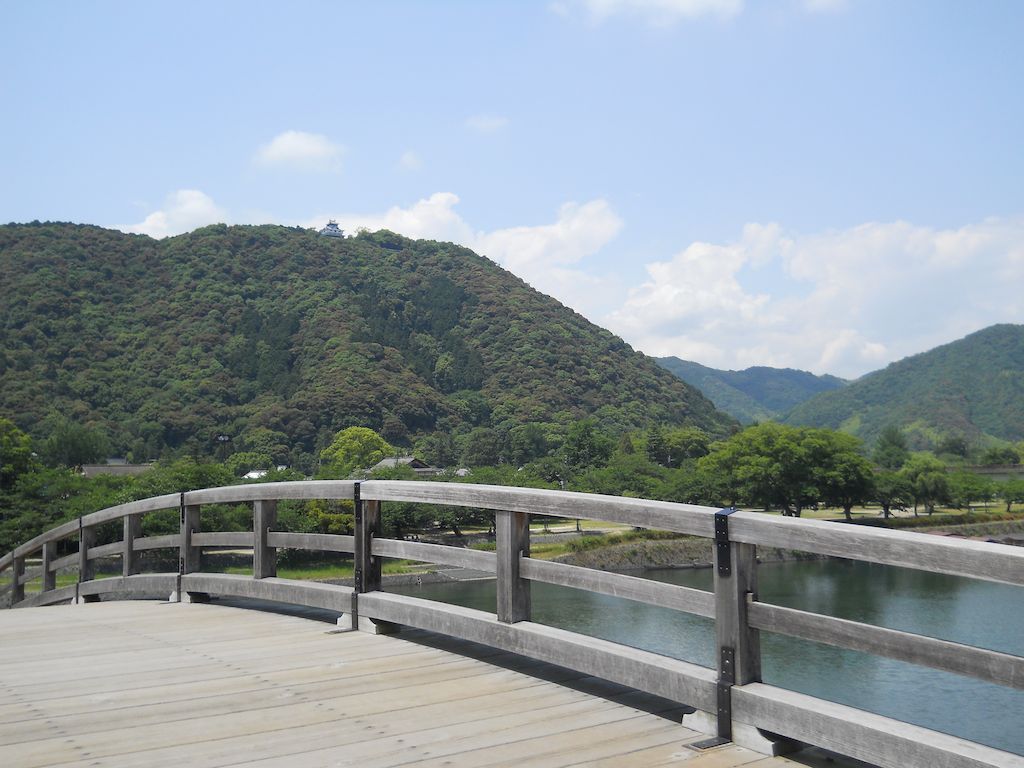
Iwakuni Castle sits atop green Mount Shiro-yama overlooking the sea, river and city.
Construction of the castle ended in 1608. Seven years later the Tokugawa Shogunate ordered the castle destroyed to meet its "one castle per province" law. When the castle was rebuilt in modern times—1962—it was relocated closer to the edge of the mountaintop to make it appear more scenic and provide a better view of the lands below. The castle houses a museum of maps, paintings, weapons and other paraphernalia, plus a photo gallery of Japanese bridges and castles.
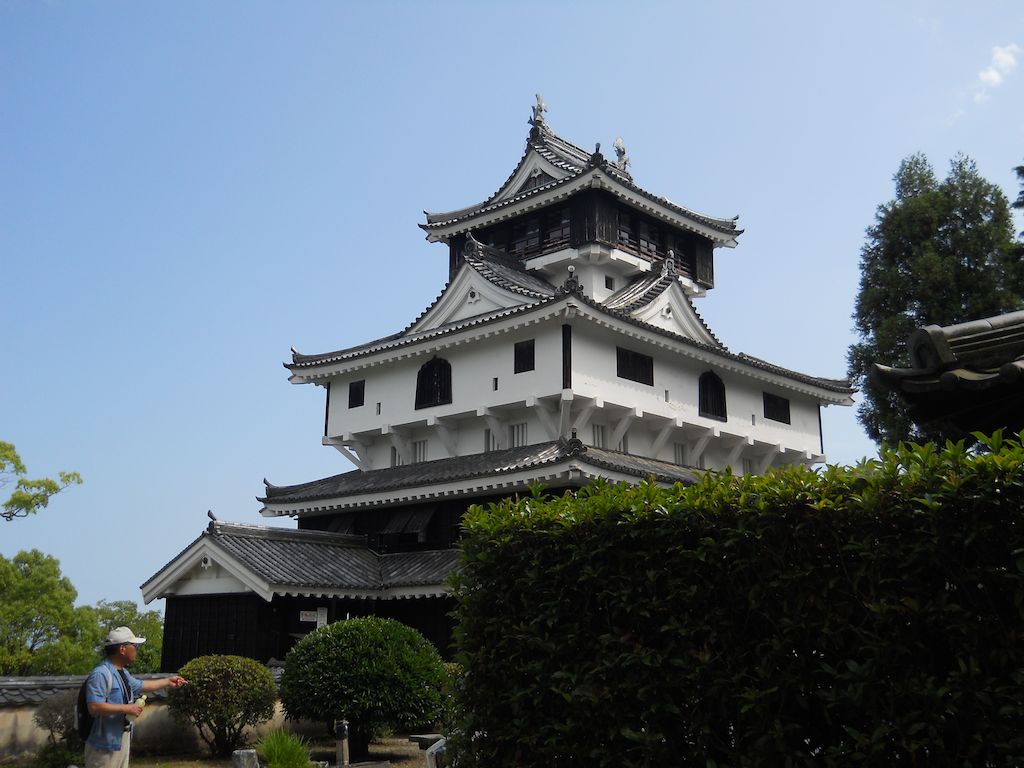
Iwakuni Castle was rebuilt in 1962 and moved to a scenic spot near the original site.
The Mount Shiro-yama hosts more than 200 species of trees, 100 types of ferns and 350 varieties of plants. In 1973, a new species of tree was discovered. Kimino-tamamizuki features colorful spring blossoms and small golden fruit in the fall. For a leisurely walk follow the cherry blossom path through the grove of cherry trees and into the bamboo grove.
Iwakuni is one of only a handful of places where ukai—cormorant fishing—is still practiced as it was in the seventh century. Each evening between June and August—weather and water level permitting—fisherman don traditional attire, launch their long, narrow wooden boats with a burning torch suspended from the bow and load their leashed cormorants. The birds dive into the water to retrieve ayu—small trout—which are attracted by the fiery light. The spectacle lasts 40 minutes to 2 hours. Observers may watch from shore or purchase a seat on a spectator barge for a closer view.
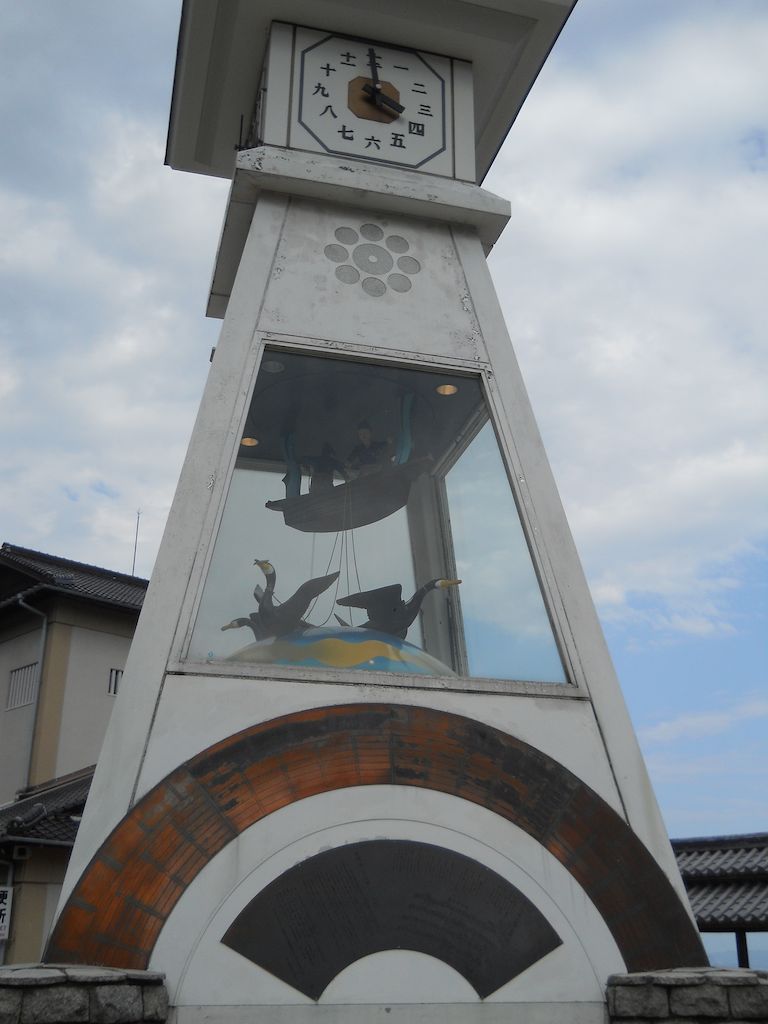
A tall mechanical clock honors ukai (cormorant fishing) with replica cormorants on leashes below a boat carrying miniature fisherman seeking ayu (small trout).
Each May, the Marine Corps Air Station Iwakuni opens the base to visitors for Friendship Day, featuring a brass band parade, aerial demonstrations, military and civilian aircraft displays and a World War II vintage Zero plane exhibit. More than 250,000 people flock to the annual goodwill event.
Iwakuni is one of three major sources of lotus stem, a delicacy cultivated since feudal times. Vinegar lotus stem is a popular festival food. Sample iwakuni-zushi—sushi made in a large rectangle of vinegar rice garnished with tidbits of cooked fish and vegetables, then sliced into individual servings. Ayu, the aromatic fish from the Nishiki River, is another regional specialty.
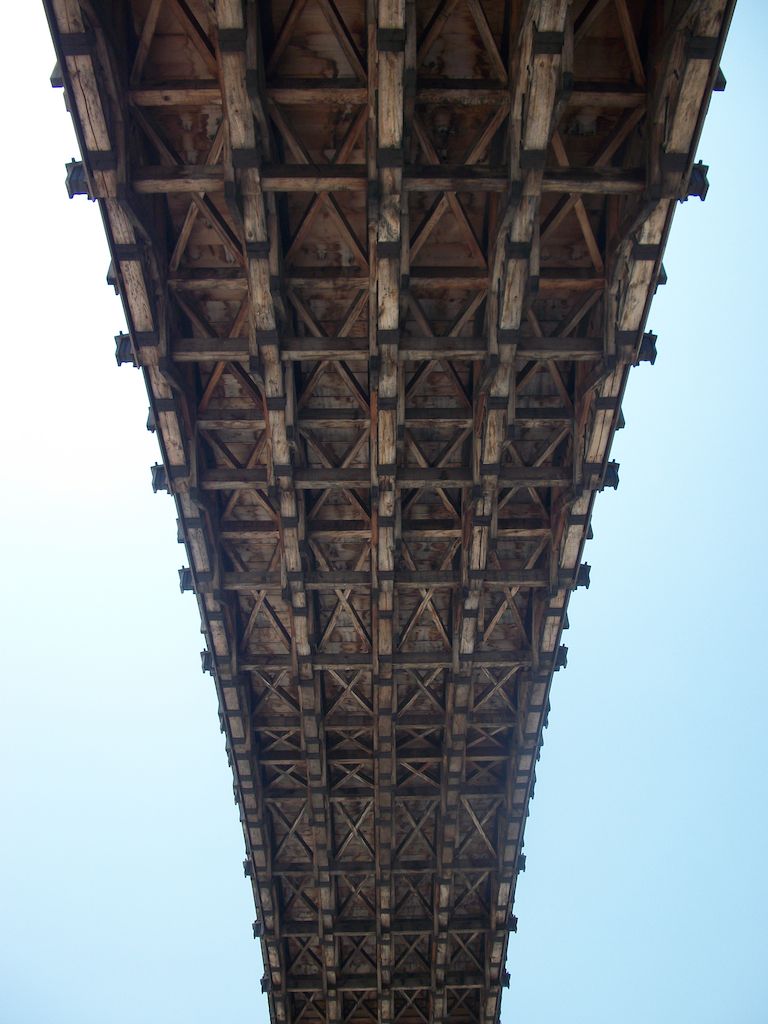
The underside of the bridge shows how it obtains its description of being brocade. Originally the bridge was made only of wood, but now includes some metal connectors.
The city of 144,000 is located on Honshu, Japan’s most populated island. A new airport opened in December 2012 offering four direct flights daily from Tokyo’s Haneda Airport. The customary way to travel to Iwakuni is by train. Shin-Iwakuni is a station for the Shinkansen (bullet train) if you come from a long distance. Tokyo to Iwakuni via Shinkansen ranges between 4 to 5 hours. From Hiroshima you can hop a bus (90+ minutes) or a local train (45 minutes) to Iwakuni Station. At the station, purchase a bus fare including bridge entrance to the tourist area. The bus stops at the bus terminal adjacent to the bridge. If you have a JR Rail Pass, you can use it for either the Shinkansen or train from Hiroshima.
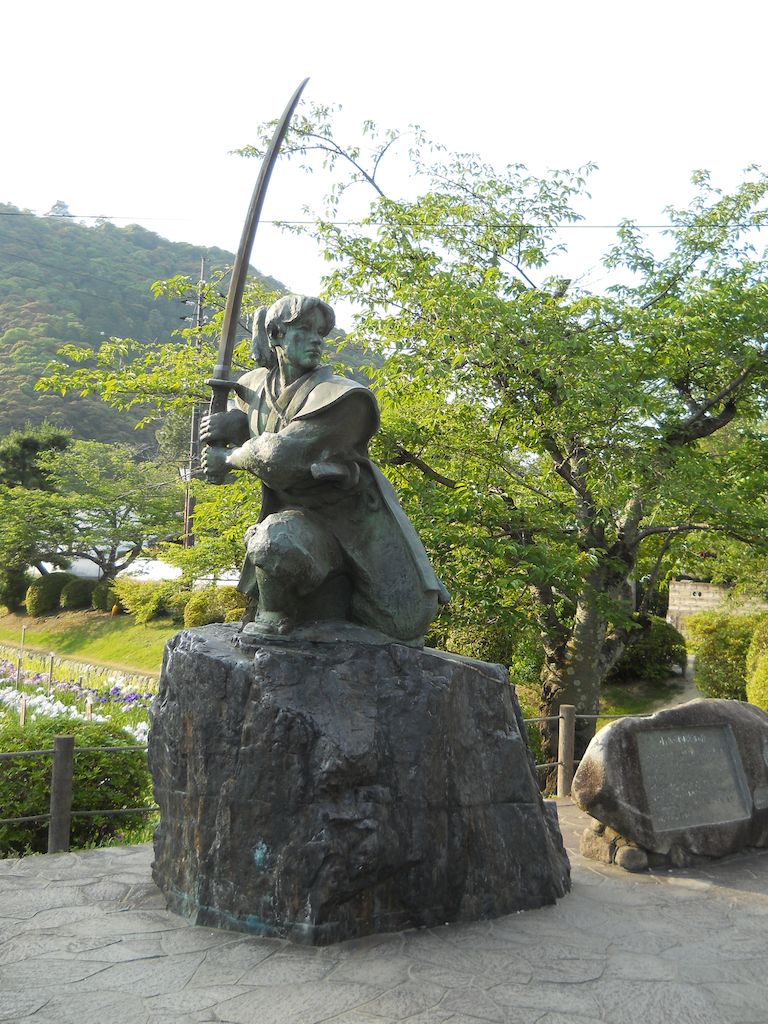
Sasaki Kojiro (佐々木 小次郎) — aka Ganryū Kojirō —invented his tsubame-gaeshi move by observing swallows flying at the bridge at Iwakuni.